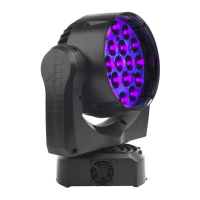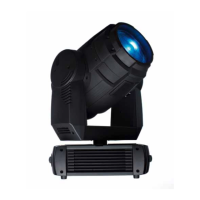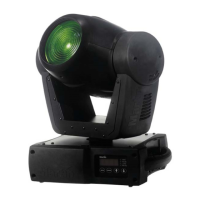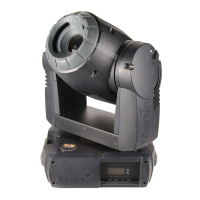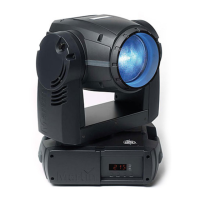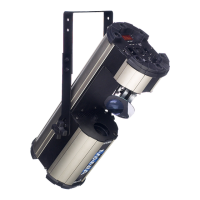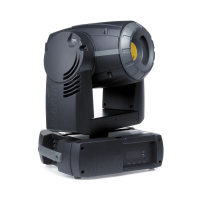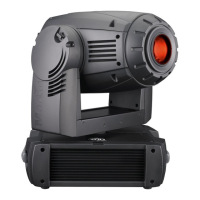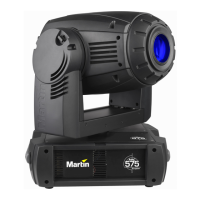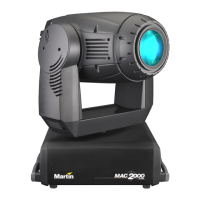Do you have a question about the Martin ATOMIC 3000 and is the answer not in the manual?
Safety precautions to prevent electric shock when operating the fixture.
Precautions for preventing UV radiation exposure, burns, and fire hazards.
Safety measures to prevent injuries from fixture falls during installation or operation.
Guidelines to avoid triggering epileptic seizures with flashing light effects.
Instructions for safely unpacking the Atomic 3000 and its components.
Details on connecting the fixture to the AC power supply and circuit requirements.
Guidance on fitting a plug to the mains lead for power connection.
Step-by-step instructions for attaching the mounting bracket to the fixture.
Procedures and safety checks for securely rigging the fixture for use.
How to select high or low power settings for the lamp to manage intensity and life.
Information on the types of Martin and approved alternative lamps for the fixture.
Detailed instructions and warnings for replacing the fixture's lamp.
How to connect the fixture to a DMX controller using XLR data cables.
Best practices and tips for reliable DMX data transmission and connection.
Explanation of the different DMX control modes (1, 3, 4 channel) and their settings.
How to set the DMX start address for individual fixture control.
Step-by-step guide to setting the DMX address using DIP switches.
How to control intensity, duration, and rate via DMX for various modes.
Details on programmed effects and the blinder effect in DMX control.
How to trigger single flash events using DMX control.
How to set the flash rate for stand-alone operation without a controller.
Steps to configure the fixture for stand-alone operation modes.
How to achieve simple on/off remote control using a switch or relay.
Using the Martin MC-1 remote control with the Atomic 3000.
Overview of the optional Atomic Detonator remote control features.
Specific data connection requirements when using the Atomic Detonator.
How to set master/slave modes for the Detonator remote control.
Detailed operation of the Atomic 3000 when controlled by the Detonator.
Guide to setting up chase sequences with multiple fixtures using the Detonator.
Instructions and precautions for replacing the primary fuse in the fixture.
Information on how to update the fixture's firmware.
Detailed DMX channel assignments and functions for 1-channel mode.
Detailed DMX channel assignments for 3 and 4 channel modes.
Details on physical dimensions, weight, and maximum ambient temperature.
Information on DMX control modes, remote control, and stand-alone options.
List of compatible lamps, AC voltage, frequency, and current requirements.
Details on housing, finish, and installation clearances.
Safety precautions to prevent electric shock when operating the fixture.
Precautions for preventing UV radiation exposure, burns, and fire hazards.
Safety measures to prevent injuries from fixture falls during installation or operation.
Guidelines to avoid triggering epileptic seizures with flashing light effects.
Instructions for safely unpacking the Atomic 3000 and its components.
Details on connecting the fixture to the AC power supply and circuit requirements.
Guidance on fitting a plug to the mains lead for power connection.
Step-by-step instructions for attaching the mounting bracket to the fixture.
Procedures and safety checks for securely rigging the fixture for use.
How to select high or low power settings for the lamp to manage intensity and life.
Information on the types of Martin and approved alternative lamps for the fixture.
Detailed instructions and warnings for replacing the fixture's lamp.
How to connect the fixture to a DMX controller using XLR data cables.
Best practices and tips for reliable DMX data transmission and connection.
Explanation of the different DMX control modes (1, 3, 4 channel) and their settings.
How to set the DMX start address for individual fixture control.
Step-by-step guide to setting the DMX address using DIP switches.
How to control intensity, duration, and rate via DMX for various modes.
Details on programmed effects and the blinder effect in DMX control.
How to trigger single flash events using DMX control.
How to set the flash rate for stand-alone operation without a controller.
Steps to configure the fixture for stand-alone operation modes.
How to achieve simple on/off remote control using a switch or relay.
Using the Martin MC-1 remote control with the Atomic 3000.
Overview of the optional Atomic Detonator remote control features.
Specific data connection requirements when using the Atomic Detonator.
How to set master/slave modes for the Detonator remote control.
Detailed operation of the Atomic 3000 when controlled by the Detonator.
Guide to setting up chase sequences with multiple fixtures using the Detonator.
Instructions and precautions for replacing the primary fuse in the fixture.
Information on how to update the fixture's firmware.
Detailed DMX channel assignments and functions for 1-channel mode.
Detailed DMX channel assignments for 3 and 4 channel modes.
Details on physical dimensions, weight, and maximum ambient temperature.
Information on DMX control modes, remote control, and stand-alone options.
List of compatible lamps, AC voltage, frequency, and current requirements.
Details on housing, finish, and installation clearances.
| Type | Strobe |
|---|---|
| DMX Channels | 3 |
| Control | DMX |
| Dimming | 0-100% |
| Voltage | 50/60 Hz |
| Lamp | Xenon |
